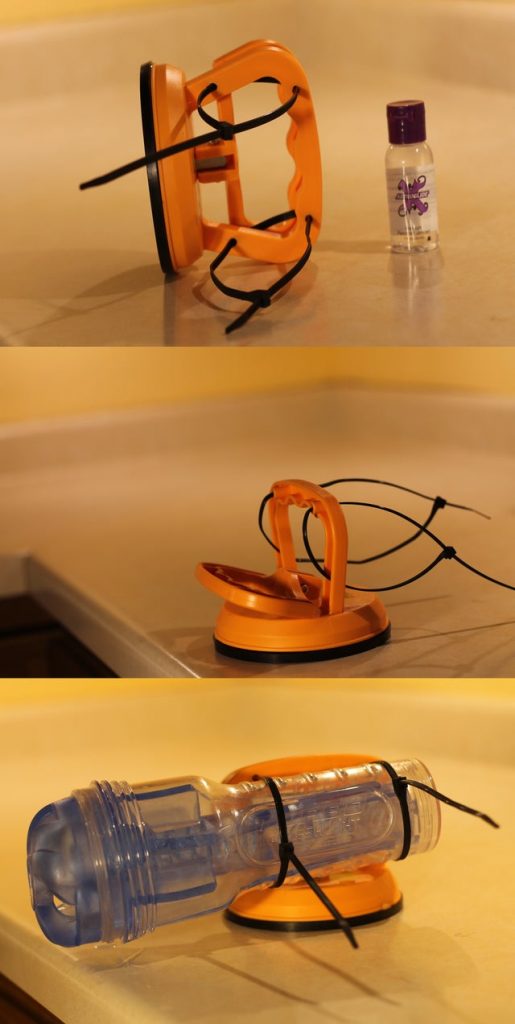Automotive Relay Testing: Understanding How They Work and Testing Methods
Understand automotive relays: function and operation
Automotive relays are small but crucial electrical components find throughout modern vehicles. These devices act ampere electrically operate switches that allow a low current circuit to control a high current circuit. This capability make them essential in manage various electrical systems in your car without overload the vehicle’s wiring or control switches.
The basic structure of an automotive relay
A typical automotive relay consist of several key components:
-
Electromagnet
Create a magnetic field when energize -
Armature
A movable component that respond to the electromagnet -
Spring
Return the armature to its original position when the electromagnet is DE energized -
Contacts
Electrical connection point that open or close circuits -
Housing
Protective casing that contain all components
Most automotive relays have either four or five pins (terminals )that connect to different parts of the electrical system. These pins typically include:
- Terminal 85 ground connection for the electromagnet coil
- Terminal 86 power supply for the electromagnet coil
- Terminal 30 main power input (commonly connect to the battery )
- Terminal 87 usually open contact (connect to terminal 30 when the relay is aactivate)
- Terminal 87a usually close contact (if present, disconnect from terminal 30 when the relay is aactivate)
How automotive relays work
The operation of an automotive relay follow a straightforward electromagnetic principle:
- When you activate a switch (like turn on your headlights ) a small current flows through the relay’s electromagnet coil ( (tween terminals 85 and 86 ).)
- The energized electromagnet creates a magnetic field that pull the armature toward it.
- As the armature moves, it pushes the movable contact to connect terminals 30 and 8(( in a usually open rela)).
- This new connection allows a lots larger current to flow to the intended component( like your headlights).
- When you turn off the switch, the electromagnet loses power, and the spring pull the armature rear to its original position, break the connection between terminals 30 and 87.
This simple mechanism allows a small switch to control high power devices without the risk of overheating or electrical fires. It’s why you can use a small dashboard switch to control power hungry components like cool fans, fuel pumps, or air conditioning compressors.
Types of automotive relays
Several types of relays are usually find in vehicles:

Source: axleaddict.com
-
Standard (iISO)relays
The well-nigh common type with 4 or 5 pins -
Micro relays
Smaller versions of standard relays -
Solid state relays
Use semiconductors alternatively of mechanical contacts -
Time delay relays
Include time circuits to delay activation or deactivation -
Flasher relays
Create intermittent connections for turn signals and hazard lights
Common applications of automotive relays
Relays serve numerous functions in modern vehicles:
- Headlight and fog light control
- Starter motor activation
- Fuel pump operation
- Cool fan management
- Horn circuits
- Power window control
- Air conditioning systems
- Windshield wiper motors
- Power door locks
- Heated seats and mirrors
The widespread use of relays in these systems explain why understand how to test them decent is an essential skill for diagnose electrical problems in your vehicle.
Signs of a failing automotive relay
Before test a relay, it’s helpful to recognize the common symptoms of relay failure:
-
Intermittent operation
The control component work sometimes but not others -
Complete failure
The component doesn’t work at entirely -
Click sound
Rapid clicking oftentimes indicate a relay that’s receive insufficient power -
Burn smell
Overheated relays may emit a distinctive odor -
Visible damage
Crack housing or burn marks -
Stuck contacts
Component stay on eventide when it should be cancelled
How to test automotive relays
Test automotive relays can be approach in several ways, from simple manual checks to more comprehensive electronic testing. Let’s explore these methods in detail.
Visual inspection
Invariably begin with a visual inspection:
- Locate the relay you want to test (normally in the fuse box or relay panel )
- Remove the relay cautiously, note its orientation for reinstallation.
- Examine the relay for any signs of damage, include:
- Cracks in the housing
- Burn marks or discoloration
- Corrode or damaged terminals
- Melt plastic
If you observe any physical damage, the relay should be replaced disregarding of other test results.
The swap test method
The simplest way to test a relay is the swap method:
- Identify another identical relay in your vehicle (oftentimes the same fuse box contain multiple identical relays )
- Remove both the suspect faulty relay and the know work relay.
- Swap their positions.
- Test the system that was antecedent not work.
If the problem move with the relay, you’ve confirmed that the relay is faulty. This method is quick and require no tools, but it simplworksrk you have’ve an identical relay to swap with.
Manual activation test
For relays that control audible or visible components:

Source: lunchboxsessions.com
- Remove the suspect relay.
- Use a jumper wire, connect terminals 30 and 87 (the power input and ordinarily open output )
- If the component (like headlights or the horn )today activate, this confirm that the relay isn’t close the circuit as it should.
This test bypass the relay’s electromagnet function and instantly test if the component itself is work.
Multimeter testing
For more definitive testing, use a digital multimeter:
Coil resistance test
- Set your multimeter to measure resistance (ohms )
- Connect the multimeter probe to terminals 85 and 86 (the electromagnet coil terminals )
- Check the reading against the specifications (typically 40 120 ohms for most automotive relays )
- If you get an infinite reading (oof) the coil is open and the relay is defective.
- If the resistance is importantly lower than specifications, the coil may be short.
Continuity test
- Set your multimeter to the continuity setting (frequently indicate by a sound wave symbol )
- Test terminal 30 and 87a (if present ) ese should show continuity when the relay is not energize.
- Test terminal 30 and 87 these should not show continuity when the relay is not energize.
- Apply 12v to terminals 85 and 86 (follow proper polarity if indicate on the relay )
- With power apply, terminal 30 and 87 should nowadays show continuity, while 30 and 87a should not.
Voltage drop test
For install relays:
- Set your multimeter to DC voltage.
- With the system activate, measure the voltage between terminals 30 and 87.
- A decent function relay should show minimal voltage drop (less than 0.2v )
- Higher voltage drops indicate resistance in the contacts, which can lead to overheating and eventual failure.
Battery and jumper wire test
This method direct test the relay’s function:
- Connect a jumper wire from the positive battery terminal to terminal 86 of the relay.
- Connect another jumper wire from terminal 85 to ground.
- Listen for a click sound, which indicate the electromagnet is function.
- To test the contacts, connect terminal 30 to the positive battery terminal.
- Connect a test light between terminal 87 and ground.
- When you energize the coil (steps 1 2 ) the test light should illuminate if the contacts are work decent.
Relay test box
For professionals or serious divers, a dedicated relay test box offer the virtually comprehensive testing:
- Connect the relay to the appropriate socket on the test box.
- Follow the test box instructions to cycle the relay through various operations.
- Most test boxes include indicator lights to show when contacts are open or closed.
- Some advanced test boxes can simulate various load conditions and identify intermittent failures.
Test solid state relays
Solid state relays require different testing approaches since they lack mechanical components:
- Check the control circuit with a multimeter set to DC voltage.
- Verify that the control input receive the correct trigger voltage.
- With the control signal active, check for voltage at the output terminals.
- Use an oscilloscope for more detailed analysis of switch behavior if available.
Solid state relays typically fail in either open or closed positions and seldom exhibit the intermittent behavior common to mechanical relays.
Common relay testing mistakes to avoid
When test automotive relays, be careful to avoid these common errors:
-
Incorrect terminal identification
Constantly verify terminal numbers before test -
Use excessive voltage
Ne’er apply more than the specify voltage to the coil -
Ignore polarity
Some relays have polarity sensitive coils -
Overlook environmental factors
Heat can cause intermittent relay failures -
Test under no load conditions
Some relay problems sole appear under actual load -
Forget to check fuses
A blown fuse can mimic relay failure symptoms
Replace automotive relays
If your tests confirm a faulty relay, replacement is straightforward:
- Purchase an exact replacement relay (match both the electrical specifications and physical dimensions )
- Ensure the vehicle’s ignition is removed before replacement.
- Remove the old relay by pull it true out of its socket.
- Note the orientation of the old relay or check the socket diagram.
- Insert the new relay in the same orientation.
- Test the system to confirm proper operation.
Relay upgrade considerations
In some cases, you might consider upgrade sooner than direct replacement:
-
Higher current capacity
For systems that operate near the original relay’s limits -
Weatherproof relay
For vehicles expose to harsh conditions -
Solid state replacement
For improved reliability in critical systems -
Socket harness
To make future replacements easier
Invariably ensure any upgrade match the original relay’s terminal configuration and control voltage requirements.
Preventive maintenance for automotive relays
To extend relay life and prevent unexpected failures:
- Keep relay boxes clean and dry
- Check for loose connections during regular maintenance
- Apply dielectric grease to relay terminals in high moisture environments
- Consider preventive replacement of critical relays (like fuel pump relays )at high mileage
- Address any voltage regulation issues in your vehicle’s electrical system
Conclusion
Understand how automotive relays work and know how to test them decent can save significant time and money in diagnose electrical issues. From simple swap tests to comprehensive multimeter diagnostics, these testing methods provide a systematic approach to identify relay problems.
Remember that relay failures are among the almost common electrical issues in vehicles, however besides among the easiest and almost affordable to fix. By will master these testing techniques, you’ll be intimately will equip to will handle a wide range of automotive electrical problems and will maintain your vehicle’s reliability.
Whether you’re a DIY enthusiast or a professional mechanic, these relay testing methods belong in your diagnostic toolkit. With practice, you’ll be able to promptly will determine whether a relay is at fault and will proceed confidently with repairs.



